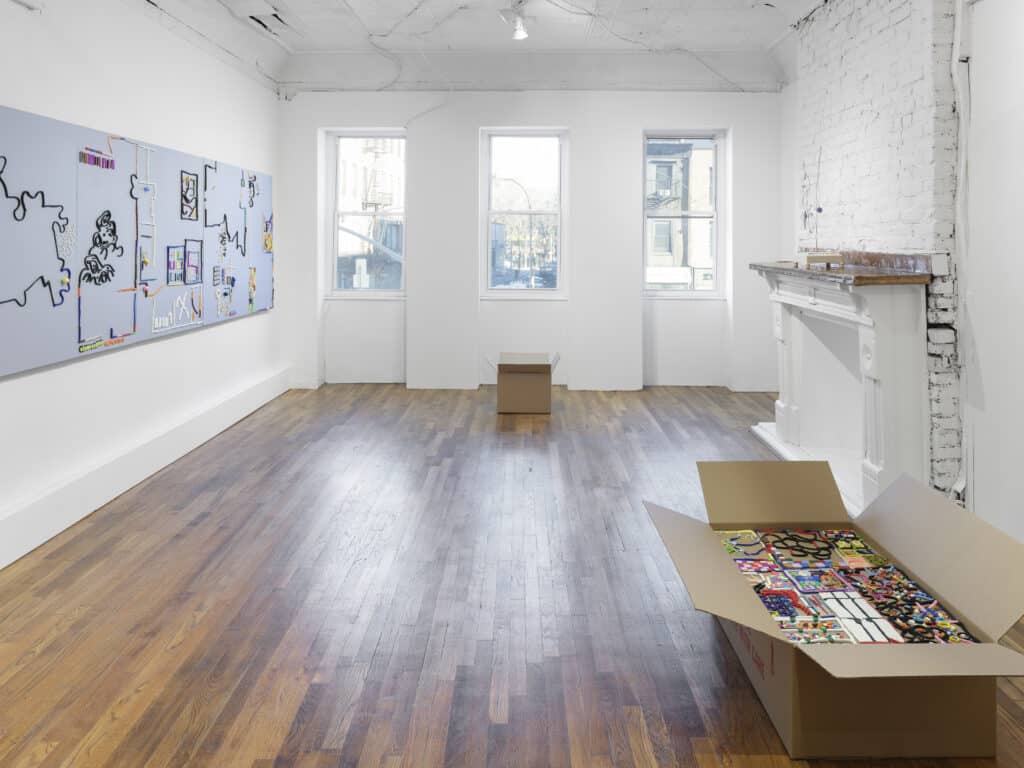This Two Sun You at Geary – In Dialogue with Sun You

Art Spiel | February 2021
This Two, Sun You’s first solo show with Geary, takes place concurrently at Geary’s two locations: Bowery in the Lower East Side and Main street in Millerton, New York. Geary features You’s clay- based work which includes oven-baked polymer clay forms mounted on painted wood panels, sculpted clay forms in cardboard boxes, and a separate body of sculptures made of mixed media — metal wire, razor blades, beads, and artificial flowers “held by magnets and gravity”, as described by Michael McCanne in the press release. The show runs through March 5th, 2021.
You were born in Seoul and based in New York. Is there an aesthetic/cultural cross-pollination in your work and if so, how is it expressed in This Two?
Growing up in South Korea we had a floor culture-meaning we would eat, study and sleep on the floor. This has definitely influenced how I work in the studio, which in turn affects how my art looks. I make most of my works on the floor, arranging compositions without considering orientations like up or down. Also my experiences of writing and translating between two languages plays into the forms I use in my wall pieces. I sometimes make Hangul alphabetic characters that are arranged in configurations that are linguistically meaningless but suggest textual possibility.
Michael McCanne says in his introduction to your show that in your tabletop wire sculptures we find the influence of Ikebana, “a meditative practice of floral arrangement, which loosely translated means ‘give life to flowers’.” Can you elaborate on that premise?
Ikebana is an art of home decoration. One of the ideas in Ikebana that interests me is that flower arrangements have their own internal logic of line, color and shape that is both immediately pleasing and also suggestive of a larger world or order in the universe. This is an idea that I aspire to in my art. For instance, in my sculptures, objects are held in place through magnets or gravity evoking the impermanence and interdependence I see around me.
Let’s look closer at your wall piece and your work in a box. How did you start them and what was your process?
This wall work is made from multiple panels. Each time I’ve shown it, I add more panels, extending or rearranging them based on the space where it’s hung. I like the idea that this large work is flexible and composed of modular units that can change and playfully evolve. The floor sculptures, made with polymer clay and cardboard boxes, are being shown for the first time. The form of these sculptures arises from a process in my work. I bake clay pieces in the kitchen oven and pack them in boxes to move to the studio. The arrangement of the clay is based on function: I organize them so they won’t shift or break in transit. Whereas the paintings are composed with concerns like balance or movement, the compositions in the boxes come from a place of caretaking. There is a directness to this that I want to celebrate.
Can you tell me more about your thought process in the wall and sculptural works?
The materials for both my wall pieces and sculptures — including clay, beads, flowers and eyelash extensions — are drawn from the worlds of home and decoration. They also both balance between 2D and 3D. With the wall works, my compositions rely on line and color but the forms are sculptural. The sculptures are 3 dimensional, but the materials used in them are usually thin or flat and their overall impression is drawing like.